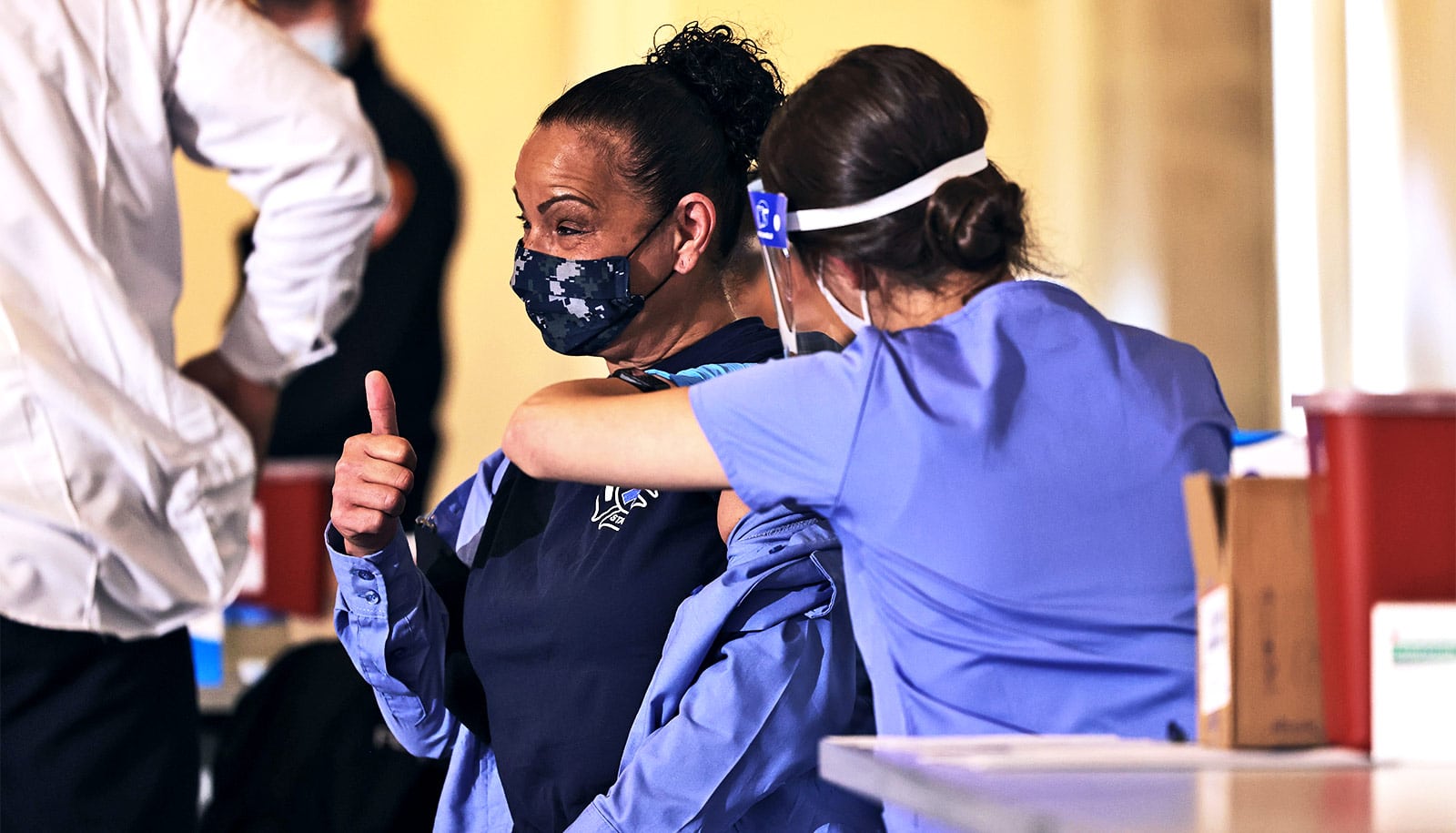A simple language intervention could help boost vaccination rates, especially when presenting information to people in bilingual populations, according to a new study.
The findings show that between two groups presented with the exact same information about vaccines in two different but familiar languages, the use of one language corresponded to a 7% higher number of people saying “yes” and a 7% lower number of people saying “unsure” when asked about their intent to get vaccinated. The percentage of people saying “no” was about the same in both groups.
“Seven percentage points might not sound like much, but it is actually huge in the context of interventions,” says Boaz Keysar, professor of psychology at the University of Chicago. “It’s worth doing, because 7% of 10 million people, for example, is a lot of people.”
Bilingual populations exist all over the world, but the contexts in which the different languages they speak are used—and the mental associations people have with those languages—vary greatly from place to place.
According to the researchers, one language might be associated with more public trust than another—and that’s the language that should be used when communicating about things like vaccines.
Keysar’s lab studies the effects of language on decision making and risk assessment. The group studies language as a “frame” that influences how information is perceived, even if it does not change the content of that information.
“It’s impressive that language is so powerful,” says Janet Geipel, psychology postdoctoral researcher and lead author of the paper, published in Nature: Scientific Reports. “And surprising that simply changing the language in which the vaccine information is presented can influence trust, and subsequently people’s intention to get vaccinated.”
Geipel notes that everything except language was kept constant in the study: the content of the information, the source (a local public health authority), and the approximate sample size of the groups randomly assigned to read the information in each language.
Researchers conducted the study in Hong Kong, where many residents are native speakers of Cantonese but also speak English (both are official languages). They chose Hong Kong because it provided an ideal case study, with a large bilingual population and a relatively low vaccine uptake rate at the time the research was conducted in March to April 2021.
Staff at the Hong Kong Jockey Club University of Chicago Academic Complex | University of Chicago Francis and Rose Yuen Campus in Hong Kong helped recruit participants and administer the survey. Researchers evaluated all 611 participants to ensure adequate fluency in both languages before they received the information about vaccines.
Participants who read materials about the vaccine in English showed higher willingness to get vaccinated than those who read about the vaccine in Cantonese. But the researchers say that their larger finding should be thought about not in terms of one case study, but as an illustration of language’s power as a tool for enhancing trust more generally.
“We would expect any country to work the same, as long as the choice of language is linked to trust. For example, if Spanish-speaking immigrants in the US trust information more in Spanish than in English, then we would expect their native tongue to reduce hesitancy,” Keysar says.
The authors suggest that language choice should be considered as one of many potential interventions that can help drive higher vaccination rates: By thinking about how people are likely to perceive information, public health officials can do a better job of establishing the trust necessary to achieve positive outcomes.
Beyond vaccines, thinking critically about language choice also could potentially be used around the world to provide information in a variety of contexts—like cancer screening—that can help keep people safe and improve lives, according to the authors.
“Both our native language and foreign languages can be powerful,” Geipel says. “The key here is that language can be used as a tool to promote trust.”
Source: University of Chicago



